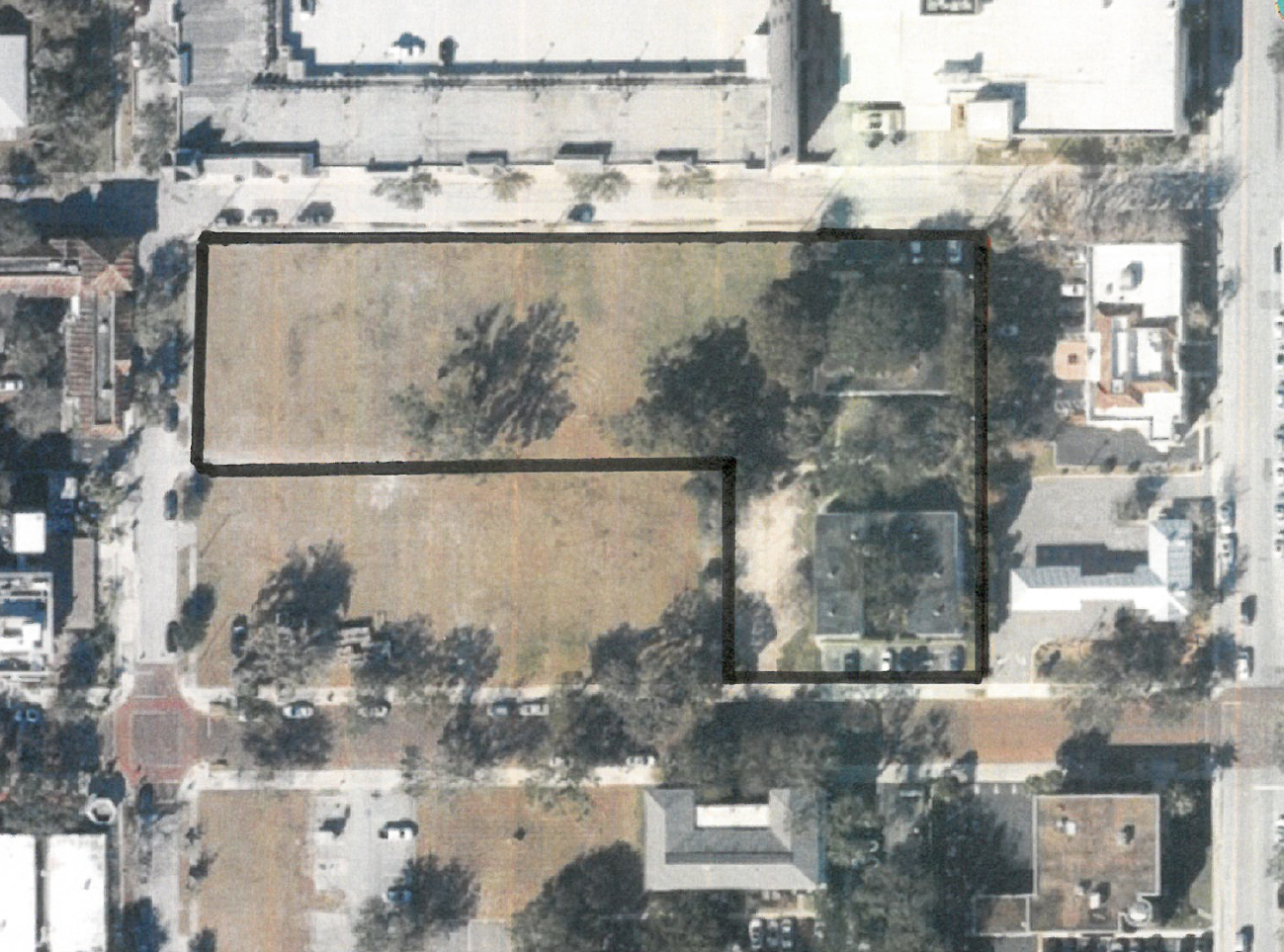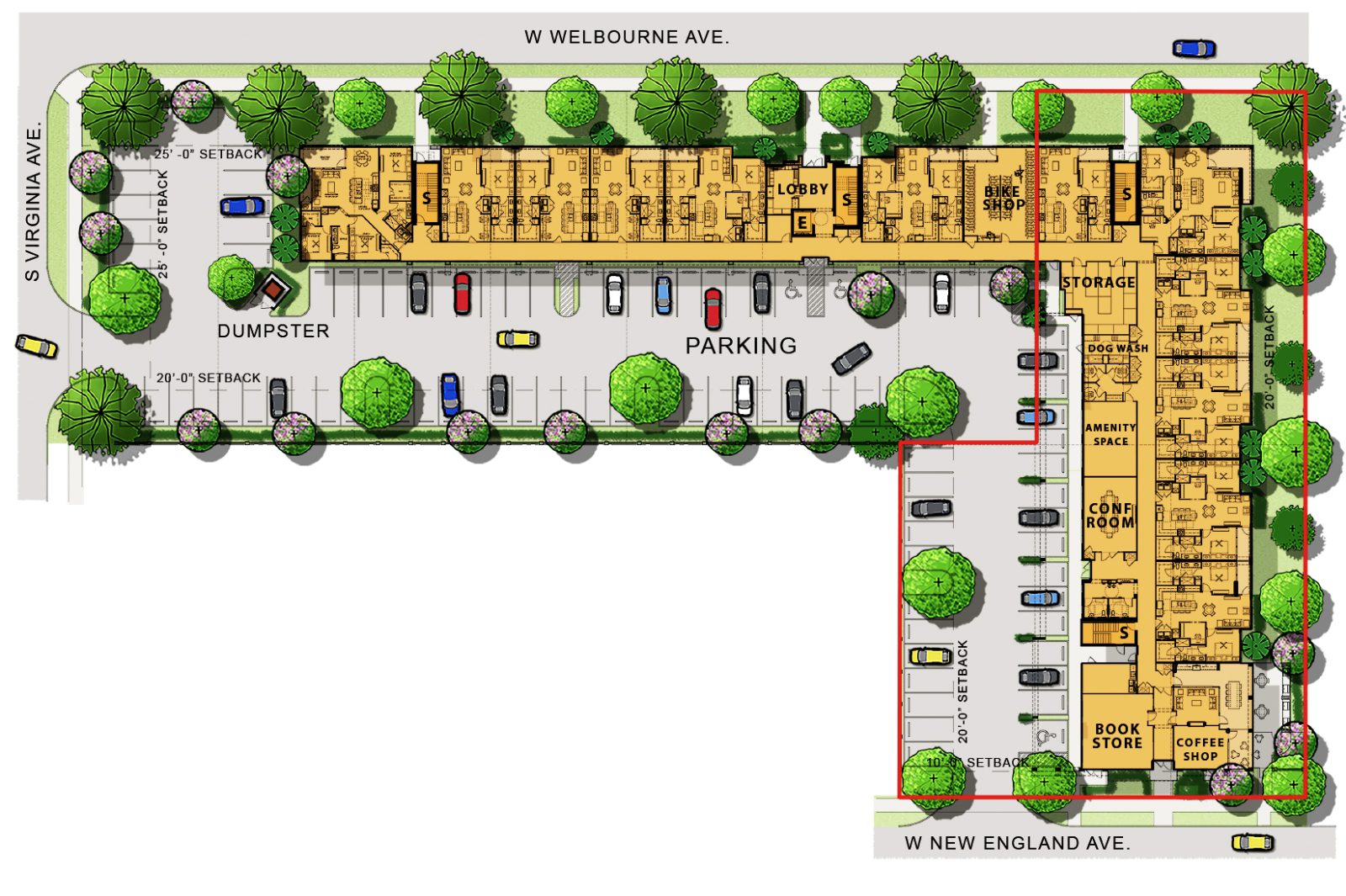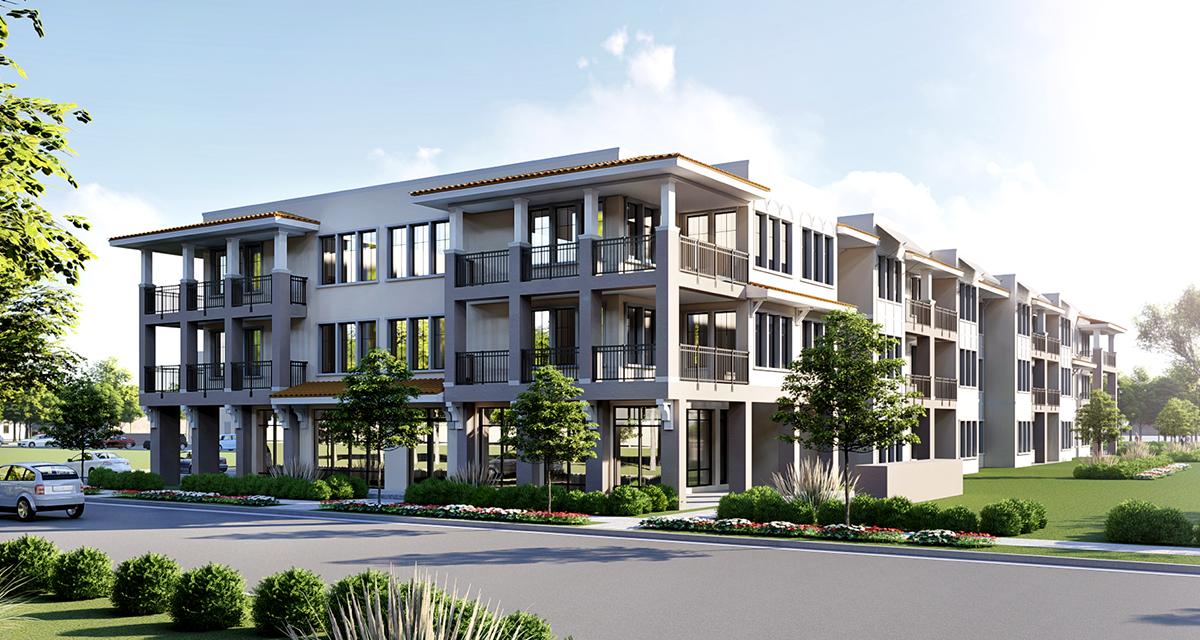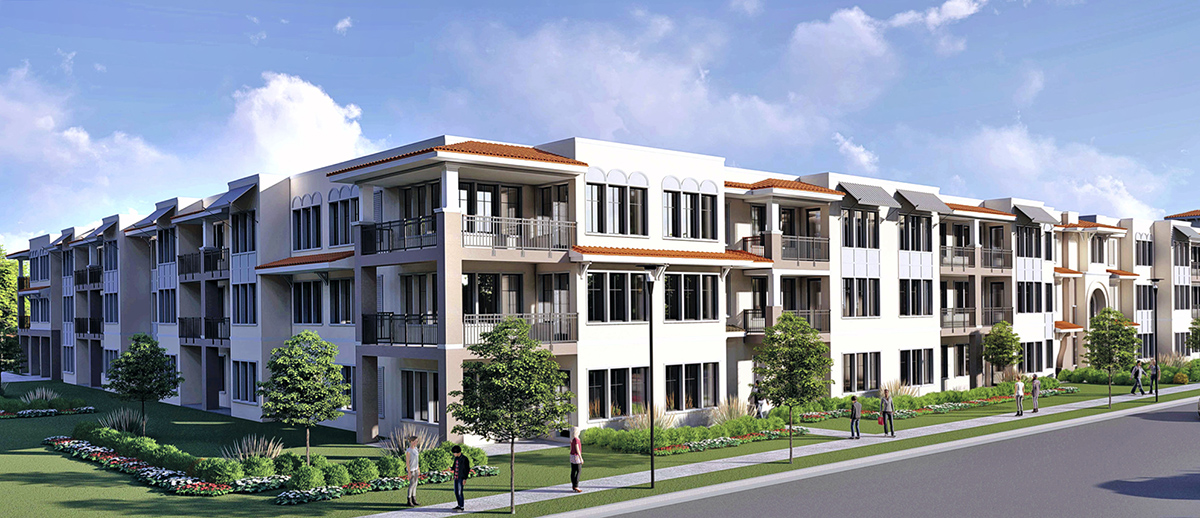Winter Park residents attended the Jan. 17 Planning & Zoning Board meeting to express concerns over a three-story, 48-unit apartment building proposed for Rollins College faculty and staff housing. The meeting, originally set for Jan. 9, had been rescheduled due to inclement weather and was the first of two public hearings on the proposal.
The 80,981-square-foot building would occupy a 1.8-acre off-campus property made up of separate college-owned lots that include 273 W. New England Ave., 262, 308 and 316 W. Welbourne Ave., and 210 S. Virginia Ave. The college is also requesting exceptions to city codes to accommodate several challenges.

Unit density
The 48 apartment units fall beyond the maximum 17 units per acre allowed by R3 zoning; however, Planning & Zoning Director Jeff Briggs explained that the three Welbourne Avenue lots were the subject of a 2010 settlement allowing 25 units per acre. The property is also considered a “non-conforming use” with a total of 28, 500-square-foot apartments built in the 1950’s – known as the Dan Hunter Apartments – currently on site. Under the Zoning Code, the city may allow the redevelopment of another non-conforming use if it is deemed a community benefit.
Commercial frontage
Rollins is requesting the adjustment of a Comprehensive Plan policy mandating the inclusion of street-level commercial businesses in new development along New England Avenue. The measure was meant to create a retail connection between Park Avenue and Hannibal Square, and calls for the entire first level fronting New England Avenue to offer commercial space. The apartment plan only includes a 1,000 square-foot coffee shop and bookstore to provide adequate living and amenity space, and to reduce parking requirements.
Third-floor design
Under the Comprehensive Plan and Zoning Code, the side of the property that fronts New England Avenue is allowed a full three-story building height, but the section fronting Welbourne Avenue is only permitted 2.5 stories with a pitched roof design. Rollins is requesting an exception supported by the fact that several area buildings do not use the third-floor pitched-roof design, including the four-story Douglas Grande building located across Welbourne Avenue.
Parking
City code requires 2.5 parking spaces per unit for the 48 apartments (a total of 120 spaces) and one space per 250 square feet for the coffee shop and bookstore (a total of 4 spaces). The proposal includes a surface lot with 97 spaces, but 14 of the 48 units are one-bedroom floorplans. Developers suggested the one-bed units could be limited to one car per unit with two car limits for the remaining floorplans. Briggs also noted that the developer can add on-street parking using indented spaces. Two live oak trees in the parking lot area would also need to be preserved.

Rollins President Grant Cornwell cited community benefits, ranging from the reduction of local traffic congestion to the addition of attainable housing. He also explained that the property would be a recruiting tool for new faculty and staff with six-year limits on leases. “This is, in no sense, transient housing,” he said.
Acceptance of the proposal was recommended by city staff under the conditions of a community benefit agreement that includes:
- Ensuring the apartments remain a source of attainable housing for a minimum of 20 years
- Prohibition of student housing and classroom use and the addition of the proposed retail elements
- Keeping the property on city tax rolls unless exclusion is permitted under state statues
- A landscape plan for live oak preservation and compensation of any removed trees
Board members echoed concerns received from residents of the neighboring Douglas Grand condominium building, posing questions over the eligibility of contractors and interns for housing, increased street parking and congestion on Welbourne Avenue, and architectural design. Seven of the nine public comments expressed during the meeting were against the apartments.
Douglas Grand residents Mark Butner and Richard Rudy were among those who reiterated concerns with the proposed frame construction and “office building” exterior. Butner also called maintenance standards into question, citing visible weathering and damage to other off-campus housing facilities.
Hibiscus Avenue resident Gigi Papa suggested a portion of Rollins’ recently approved on-campus student housing plan could be used for staff needs. “Junior and senior year, we don’t really encourage people to stay on campus,” she said. “I would ask that (Rollins College) use some of the new construction for their faculty as well.”
Sylvan Drive resident Beth Hall suggested Rollins keep city codes intact by providing staff with housing allowances and questioned the community benefit of the project. “These attainable housing units will not be for the neediest among us – first responders, or vital city workers,” she said. “They will be for Rollins faculty and staff.”


While there was agreement among board members on the need for attainable housing and the community benefits of the project, concerns over parking remained consistent. Developers proposed to mitigate the need through additional on-street parking with indented spaces on the right of way along New England and Welbourne avenues. The on-street additions, along with the 97-space lot, would bring the total up to 117 spaces.
The Board voted 4-2 to recommend the proposal to City Commission with the community benefit conditions, and additional conditions for a parking management plan to ensure one-car limits on one-bedroom units and required on-street parking along Welbourne Avenue. Approvals came from Jim Fitch, Vashon Sarkisian, Alex Stringfellow and David Bornstein. Melissa Vickers and Warren Lindsey were not in favor. The proposal will be presented to City Commission during its next meeting, schedule for January 24 at 3:30 p.m.


